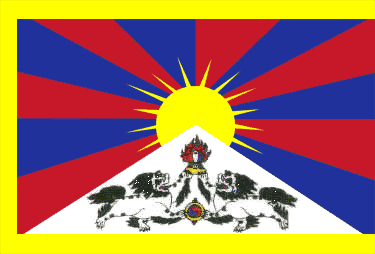
An Introduction
to Buddhism
Written by Venerable Lama
Tenzin Kalsang
(An excerpt from the "Multifaith Information Manual" chapter on Buddhism, 1995)
 FOUNDER FOUNDER


Lord Shakyamuni Buddha, 539
B.C.
NATURE
OF RELIGION
Study of the
Mind to Attain Liberation from Suffering, Enlightenment and
The State of Buddhahood.
A Profound Paradigm of Psychology, Spiritual
Philosophy and
Practice to Liberate All Beings from Suffering.
Personal insight replaces belief in God with
the complete study of the Laws of Cause and Effect - Karma.
Basic Tenet: Reincarnation
Buddhism is essentially a monastic religion, with novices and full ordination for
monks and nuns. However, Lord Buddha also taught spiritual practices for lay people
to follow. The emphasis here will be on the practices for lay people.

SCRIPTURES
Basic Types of Scriptures:
Hinayana: Tripitaka
Mahayana: Sutra
Vajrayana: Lam Rim

BASIC
TEACHINGS
All paths of Buddhism embrace the following basic teachings of Lord Shakyamuni
Buddha,
THE FOUR NOBLE TRUTHS.
THE FIRST NOBLE
TRUTH - DUKKHA
Ordinary existence is a State of Suffering.
The Three Types of Suffering:
Physical Suffering: This includes birth,
sickness, old age and death.
Impermanence:
Impermanence pervades all things
Mental
Suffering: Mental Suffering consists of conditioned states. It is the worst of
all suffering, leading to a negative mind and affecting all aspects of life.
Eventually, this negative mind leads to rebirth into one of the lower realms; one of the
hell realms, the hungry ghost realm or the animal realm. The negative, unvirtuous
mind causes the following effects:
1)
Body: Killing, stealing and sexual
exploitation of others.
2)
Speech: Lying, angry words, slander and meaningless gossip.
3) Mind: Ignorance, greed, anger.
THE SECOND NOBLE TRUTH -
THE ARISING OF DUKKHA
Cause of Suffering
Suffering is caused by an ignorant state of mind. We have been misinformed by our
culture and lack LORD BUDDHA'S teachings; hence, bondage to a false reality.
THE THIRD NOBLE TRUTH -
THE CESSATION OF DUKKHA
End of Suffering
Suffering is ended by renouncing the negative mind, developing loving kindness and
compassion for all beings, and by cutting out the root of ignorance, which brings about
understanding of the true nature of reality. This causes personal liberation from
suffering and lasting peace of mind. Such realization creates harmonious relationships
between oneself, all beings and the environment.
THE FOURTH NOBLE TRUTH -
THE PATH
Embracing the teachings of LORD BUDDHA
The only method by which one can attain liberation from suffering is to follow the path of
Buddhism. This requires mental discipline and the actual practice of LORD BUDDHA'S
teachings, which involve many lifetimes of devoted effort and commitment.

The Eightfold
Noble Path: (for Lay People only)
Wisdom
1) Right Understanding
2)
Right Intention
Ethical
Discipline
3) Right Speech
4)
Right Action
5)
Right Means of Livelihood
Mental Discipline
6) Right Effort
7) Right Mindfulness
8) Right Concentration

Five
Precepts: (For Lay People only)
The five
precepts deal with all aspects of life: body, speech and mind.
(A person may undertake 1 to 5 of these vows, depending upon one's ability to keep them
purely.)
Body
1)
Abstention from killing.
2)
Abstention from stealing.
3)
Abstention from sexual exploitation
Speech
4)
Abstention from lying.
Mind
5)
Abstention from all drugs and intoxicants which alter the mind.

DIVISIONS/DENOMINATIONS
The Three Paths of Buddhism:
The Lesser Vehicle: HINAYANA:
Tripitaka - Foundation Practices for all Schools of Buddhism.
Theravada: India, Burma, Thailand, Cambodia, Laos and Sri Lanka.
The Greater Vehicle: MAHAYANA:
Sutra - Path of the Bodhisattva (includes Foundation practices)
Ch'an: China
Zen: Korea, Japan and Vietnam.
The Diamond Vehicle: VAJRAYANA:
Lam Rim - Secret Tantra and Mantra (includes Foundation Practices and Path of the
Bodhisattva).
Tibetan Buddhism: India and Tibet.

BASIC
TENET AND PRACTICE REGARDING DEATH
Buddhism follows the
basic tenet that rebirth is an existing reality. Death is regarded as the actual time of
movement from one life to another. All rituals at death are aimed at promoting an
auspicious human rebirth into the next life, as well as preventing lower forms of rebirth
taking place, such as rebirth into one of the hell realms, the hungry ghost realm or the
animal realm.
It is imperative
that a Buddhist representative be notified well in advance to see that an appropriately
ordained Monk or Nun presides over the care of a dying person.
Back to Top

  
 |